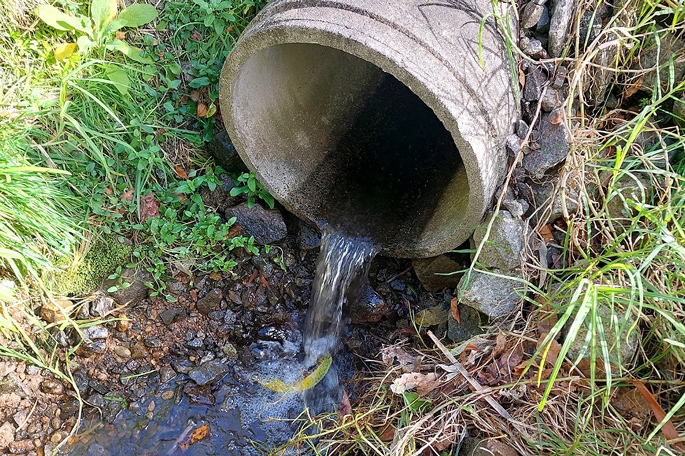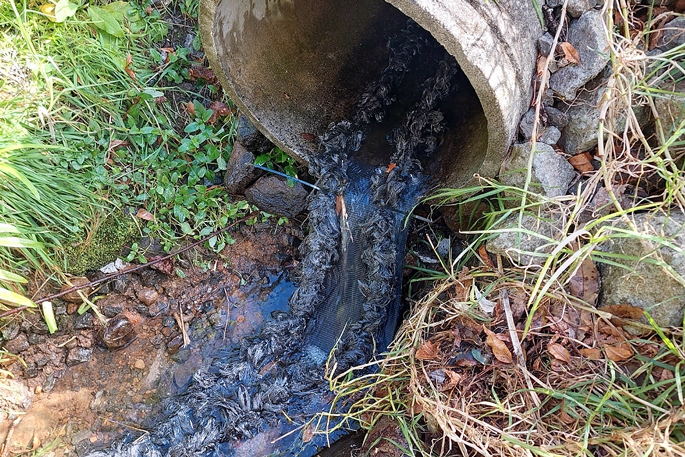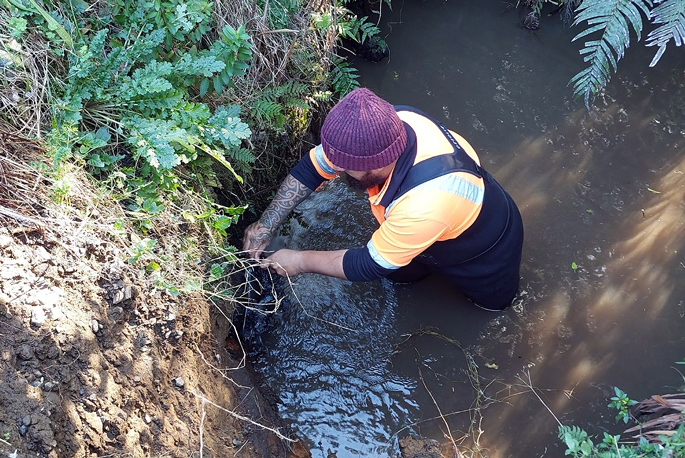Katikati’s Project Parore is hot on maintaining good fish passages in the Western Bay of Plenty.
“Little critters are a key indicator of good stream health so it’s vitally important landowners check their streams for impediments in the stream flow,” says Project Parore general manager Brodie Davis.
New Zealand has more than 50 species of native freshwater fish and several sports fish. Many species, like whitebait and eels, need to move between freshwater and the sea to complete their life-cycles. As such, NZ waterways need to be carefully managed so native fish can access the habitats they need.
Some also move upstream and downstream between different habitats in rivers and streams – for example, whitebait species (īnanga, kōaro and kōkopu) – so it’s essential they can move within waterways to reach these habitats and complete their life-cycle.
About 70 per cent of NZ’s native fish are threatened or at risk. “If their movement up and downstream is delayed or blocked completely, fish may not be able to get to the habitats they need to complete their life-cycle. Their numbers can be reduced, or they may be completely lost from a stream.”
Fish passage connects all the habitats necessary for freshwater fish and other downstream organisms like frogs, shrimps and aquatic invertebrates, to complete their life-cycles.
 ‘Before’ the introduction of a fish ladder in a local waterway. Photo: supplied.
‘Before’ the introduction of a fish ladder in a local waterway. Photo: supplied.
Ensuring fish can move within, over and through physical structures, as well as managing the water quality and flow conditions in a waterway that may impede passage, are essential for healthy fish populations.
In order to do this, Brodie says a stream should provide safe, easy up and downstream movement for all species and their various life stages, have different water conditions, and natural hiding places for fish; and enable natural processes to continue, such as sediment and debris moving downstream.
Barriers to fish passage
Culverts, weirs, fords, dams and tide and flood gates are common in streams and rivers. But if are not designed, maintained and installed correctly, these structures can stop fish moving up and downstream. “Disconnections between the water upstream and downstream of a structure can stop or slow down fish passage.
“This can be caused by culverts with a significant drop at the downstream end, extremely long structures, perched (undercut) structures, fast water flow through a structure and weirs too high for fish to navigate. Fish can also be sucked into water intakes if they don’t have suitable fish screens or are not designed to keep fish in the waterway.”
 ‘After’ the introduction of a fish ladder in a local waterway. Photo: supplied.
‘After’ the introduction of a fish ladder in a local waterway. Photo: supplied.
Brodie says Project Parore has the expertise to help landowners introduce and maintain good fish passage within their waterways.
“If you have any of these challenges and or disconnections on streams on your land – come and see us and we can arrange to come and take a look. Better still, send us a picture of the barrier before you come so we can get a heads up.
“The regional council is supporting Project Parore financially to help landowners to tackle their fish passage issues.”
Tools
Tools to mitigate some of these challenges include: fish-friendly floodgates, culvert ramps, culvert baffles, mussel ropes, crawling mats and downstream landscaping.
Sediment loss and predators also affect both spawning numbers and fish passage. “You can see how interconnected and interdependent the whole stream health and eco-system is.”
A pilot study was carried out by researcher Rae, Hee-Yun Jung to investigate inanga spawning success in the Uretara and Te Mania streams from April-June 2022. View the full report at:
https://projectparore.nz/inanga-spawing-success/



0 Comments
Leave a Comment